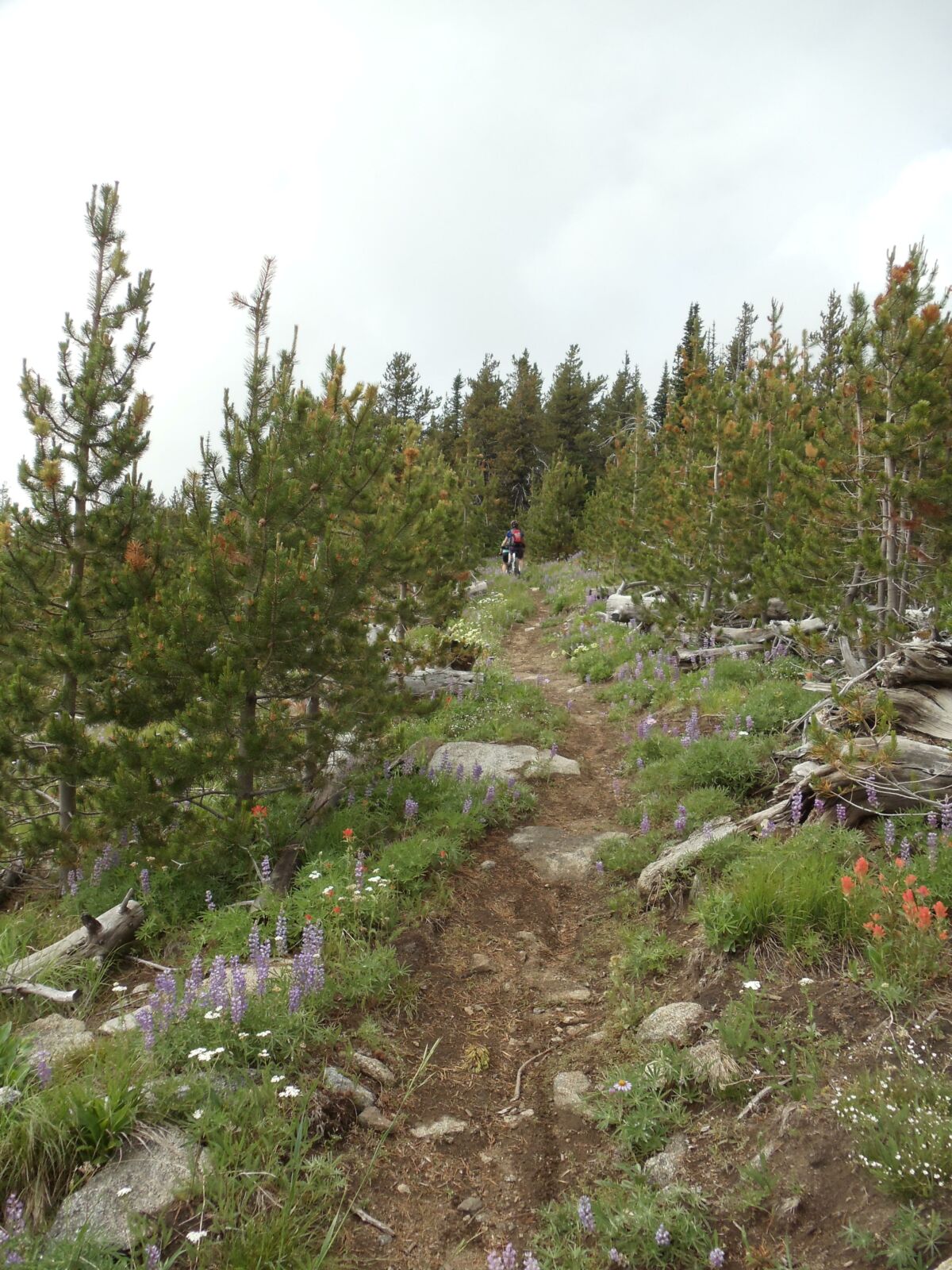Colville National Forest
The 1.1 million-acre Colville National Forest was first shaped more than 10,000 years ago by Ice Age glaciers that carved three major valleys of today's Columbia River.
The Colville National Forest has a rich natural and cultural history that started during the last ice age thousands of years ago, and continues through the time of the Native Americans and fur trappers and up to today.
The major rivers in the national forest follow paths bulldozed by Ice Age glaciers. Mile-high ice sheets surging south from Canada drowned all but the tallest peaks several times during the last two million years. The ice ground off sharp edges, leaving the mountains well rounded.
Today's landscape emerged from the melting ice about 10,000 years ago. Animals and plants followed the retreating glaciers northward, and humans were not far behind. The first Indians probably began hunting, fishing, and gathering in the area about 9,000 years ago.
Archaeologists estimate that Indians caught more than 1,000 salmon a day at Kettle Falls during peak runs. Salmon congregated below this wide, low falls on their way upstream to spawn. Fishermen stood on rocks and wooden platforms to spear and net the fish as they jumped up through the whitewater. People camping near the falls smoked and dried the fish, preserving it for winter use. Runners would carry the smoked fish back to the elders and young children who had remained behind in winter villages.
By 1826, American fur traders were living in Fort Colville, built near Kettle Falls. They brought in pigs and cattle, began farming around the fort, and limited Indian fishing access. By the late 1800's the Indians were confined to reservations. Kettle Falls and the salmon runs disappeared under the rising waters of Roosevelt Reservoir in the 1930s when Grand Coulee Dam was built.
And around that time, miners and timber harvesters came to the area with varied success. Today, the Colville National Forest is divided into management areas with different emphases. For example, the primary objective in one area might be timber management, while wildlife needs or recreational opportunities might be the prime focus in other areas.

An adventure awaits you
Visitors can partake in any number of recreational opportunities in the forest and surrounding area. The Salmo-Priest Wilderness offers a place where hikers can see all kinds of wildlife and few people. Located on the wet, west slopes of the Selkirk Mountains, this wilderness contains huge old redcedar, Douglas fir, and western hemlock. Living in the old growth and in the meadows and crags above are grizzly and black bear, cougar, caribou, elk, deer, lynx, pine marten, and wolverine.
Less primitive recreational opportunities include motorcycle trails, snowmobile trails, lakes with boat launches, interpretive trails, fishing derbies, scenic drives and off-highway vehicle trail riding. This requires special attention to forest OHV regulations.
Thirty-two campgrounds on the Colville National Forest provide a wide array of overnight stays, from lakeside-developed camps to wide spots on logging roads way back in the woods. These campgrounds are a great place to start your wildlife watching quest.
The 49 Degrees North Ski Area, near the town of Chewelah, operates privately on national forest land under a special permit. Billed as a comfortable, family ski area, it offers several chairlifts and more than twenty ski runs. Cross-country ski and mountain bike trails near here provide alternatives to downhill skiing.
Interpretive trails near Sullivan Lake and Kettle Falls tell the story of early logging, sawmilling, and mining on the Colville National Forest. Signs at an archaeological dig at Pioneer Park Campground on the Pend Oreille River describe early Indian life. An interpretive exhibit set among burned-out snags along Washington Highway 20 near Sherman Pass dramatizes and explains the White Mountain Fire of 1988.
The Sherman Pass National Forest Scenic Byway on Highway 20 between Republic and Kettle Falls is the most well known of the many scenic drives on the Colville National Forest. From this twisting mountain highway visitors can see why this area is so special.

